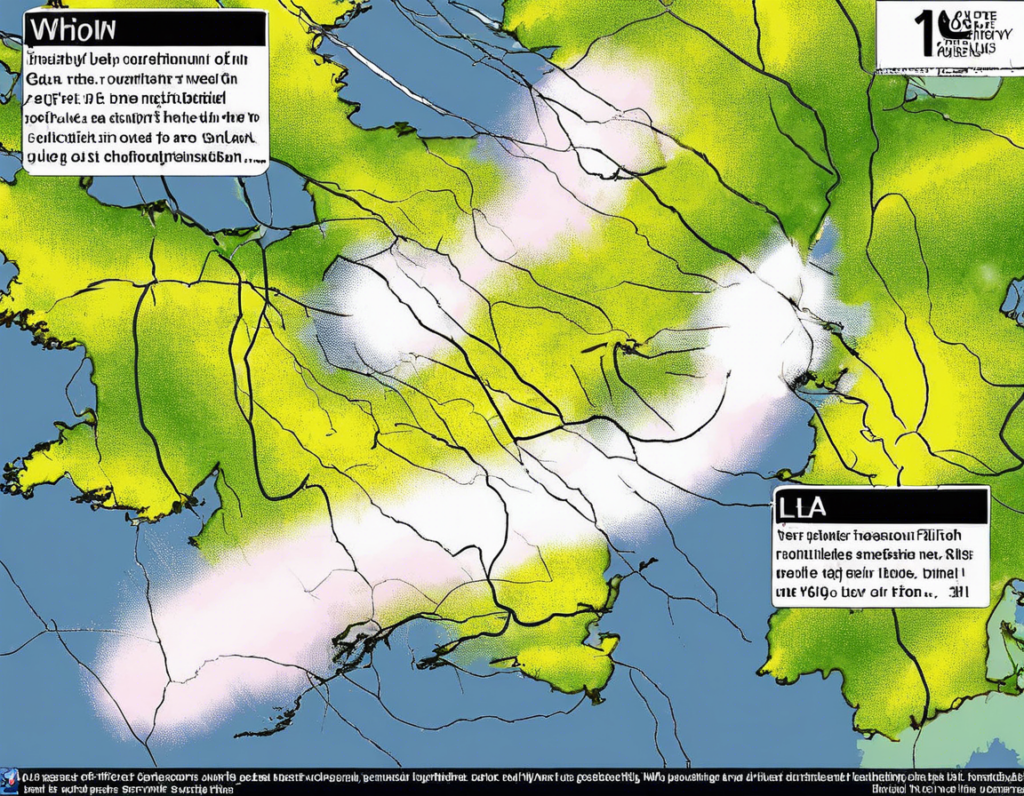Seven-Hour Thunderstorm Warning by Met Office.
Thunderstorms are a common weather phenomenon that can occur spontaneously and bring about a variety of hazards, including heavy rain, lightning, strong winds, and even hail. The Met Office, the United Kingdom’s national weather service, plays a crucial role in monitoring and predicting such events to ensure public safety and preparedness. Recently, the Met Office issued a seven-hour thunderstorm warning, alerting residents to imminent severe weather conditions that could potentially affect their daily routine. Let’s delve into what such a warning entails and how you can be ready to face it.
Understanding Thunderstorms and Their Impact
Thunderstorms are a localized weather phenomenon characterized by the presence of thunder, lightning, and often heavy rainfall. These intense convective storms are fueled by the rapid upward movement of warm, moist air, leading to the formation of towering cumulonimbus clouds. As these clouds grow, they can produce lightning, thunder, and precipitation in the form of rain, hail, or even snow.
Key Characteristics of Thunderstorms:
-
Lightning: A sudden electrostatic discharge produced during a thunderstorm, often appearing as a jagged flash of light in the sky.
-
Thunder: The sound produced by the rapidly expanding and contracting air heated by a lightning strike.
-
Heavy Rain: Intense downpours that can lead to flash flooding and waterlogging.
-
Strong Winds: Gusts of wind associated with thunderstorms can reach high speeds, potentially causing damage to structures and trees.
The Met Office Thunderstorm Warning System
The Met Office issues weather warnings to alert the public and authorities about potentially dangerous weather conditions. These warnings are color-coded based on the level of severity: yellow for low impact, amber for moderate impact, and red for high impact. The duration of the warning varies depending on the anticipated duration of the weather event.
Elements of a Thunderstorm Warning:
-
Duration: In this case, a seven-hour warning signifies that the Met Office expects thunderstorm conditions to persist for a significant period, potentially leading to prolonged impacts.
-
Geographical Coverage: The warning specifies the regions or areas expected to be affected by the thunderstorms, helping residents and emergency services prepare accordingly.
-
Hazards: The warning outlines the potential risks associated with the thunderstorms, such as heavy rain, lightning strikes, and strong winds. These hazards can pose dangers to life, property, and infrastructure.
Preparing for a Thunderstorm Warning
When faced with a seven-hour thunderstorm warning, it is essential to take proactive measures to ensure your safety and minimize any potential damage. Here are some key steps to consider:
Before the Thunderstorm:
-
Stay Informed: Keep track of weather updates from reliable sources like the Met Office to stay informed about the latest developments and warnings.
-
Secure Outdoor Objects: Secure or bring indoors any outdoor furniture, decorations, or equipment that could be picked up by strong winds and cause damage.
-
Prepare an Emergency Kit: Gather essential supplies, such as non-perishable food, water, flashlight, batteries, first aid supplies, and blankets, in case of power outages or other emergencies.
During the Thunderstorm:
-
Seek Shelter: Stay indoors during the thunderstorm and avoid contact with windows, doors, and electrical devices to reduce the risk of lightning strikes.
-
Avoid Waterlogged Areas: Stay away from flooded roads, as just six inches of fast-moving water can knock over an adult and a foot of water can sweep away a small vehicle.
-
Monitor Updates: Continuously monitor weather updates and emergency alerts on your mobile phone or battery-powered radio for any changes to the situation.
After the Thunderstorm:
-
Check for Damage: Once the storm has passed, inspect your property for any damage, such as leaks, fallen branches, or debris, and address any safety concerns promptly.
-
Report Hazards: If you encounter fallen power lines, blocked roads, or other hazards, report them to the relevant authorities to ensure a swift response.
By staying proactive and prepared, you can effectively navigate a severe thunderstorm and mitigate its potential impact on your safety and well-being. Remember, safety should always be your top priority when dealing with extreme weather conditions.
FAQs – Frequently Asked Questions
1. What is the Met Office?
The Met Office is the UK’s national weather service, providing weather forecasts, warnings, and climate-related information to the public and various sectors.
2. How accurate are thunderstorm warnings from the Met Office?
The Met Office uses advanced forecasting models and data to issue warnings, making them generally reliable. However, weather conditions can change rapidly, so it’s essential to stay updated.
3. Can thunderstorms cause power outages?
Yes, thunderstorms can lead to power outages due to lightning strikes damaging power lines, strong winds toppling trees onto power cables, or flooding affecting electricity infrastructure.
4. What should I do if I’m outdoors during a thunderstorm?
Seek shelter immediately in a sturdy building or a hard-topped metal vehicle to reduce the risk of being struck by lightning. Avoid open fields, tall trees, and bodies of water.
5. How can I protect my electronic devices during a thunderstorm?
Unplug sensitive electronics during a thunderstorm to prevent damage from power surges caused by lightning strikes. Use surge protectors to safeguard larger devices if unplugging isn’t feasible.
Navigating a seven-hour thunderstorm warning requires vigilance, preparation, and a clear understanding of the potential risks involved. By staying informed, taking precautions, and following safety guidelines, you can weather the storm safely and confidently.
